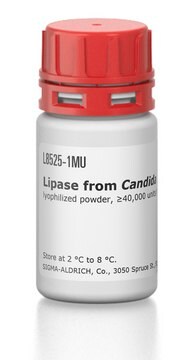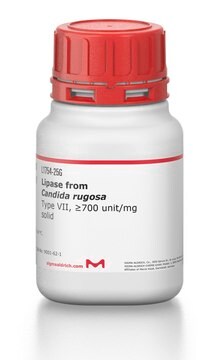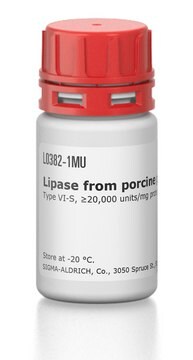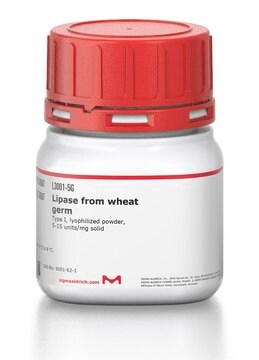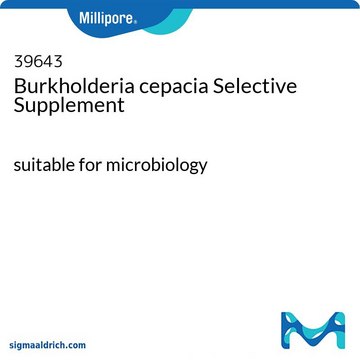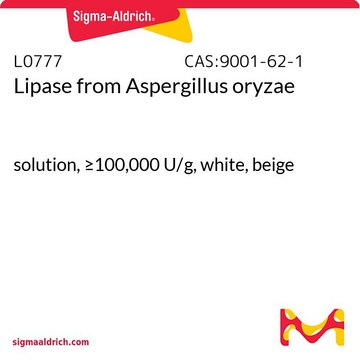62316
Lipase from Candida rugosa
powder, yellow-brown, ≥2 U/mg
Sinónimos:
CCL
About This Item
Productos recomendados
biological source
fungus (Candida rugosa)
Quality Level
form
powder
specific activity
≥2 U/mg
mol wt
Mr ~67000
storage condition
dry at room temperature
concentration
≤100%
technique(s)
analytical sample preparation: suitable
color
yellow-brown
pH range
6.5—7.5 (0.01 g/L)
solubility
water: slightly soluble
application(s)
sample preservation
storage temp.
2-8°C
InChI
1S/C11H9N3O2.Na/c15-8-4-5-9(10(16)7-8)13-14-11-3-1-2-6-12-11;/h1-7,16H,(H,12,14);/q;+1/b13-9-;
InChI key
QWZUIMCIEOCSJF-CHHCPSLASA-N
Gene Information
fungus ... LAP1(2544)
¿Está buscando productos similares? Visita Guía de comparación de productos
Categorías relacionadas
General description
The lipase enzyme is a naturally occurring enzyme present in both the stomach and pancreatic juice. It is expressed and active in various tissues. For instance, hepatic lipases are found in the liver, hormone-sensitive lipases in adipocytes, lipoprotein lipase on the vascular endothelial surface, and pancreatic lipase in the small intestine. These lipases are classified within the alpha/beta-hydrolase fold superfamily of enzymes.
Application
Biochem/physiol Actions
Unit Definition
signalword
Danger
hcodes
pcodes
Hazard Classifications
Resp. Sens. 1
Storage Class
11 - Combustible Solids
wgk_germany
WGK 1
flash_point_f
Not applicable
flash_point_c
Not applicable
ppe
Eyeshields, Gloves, type N95 (US)
Elija entre una de las versiones más recientes:
¿Ya tiene este producto?
Encuentre la documentación para los productos que ha comprado recientemente en la Biblioteca de documentos.
Los clientes también vieron
Nuestro equipo de científicos tiene experiencia en todas las áreas de investigación: Ciencias de la vida, Ciencia de los materiales, Síntesis química, Cromatografía, Analítica y muchas otras.
Póngase en contacto con el Servicio técnico